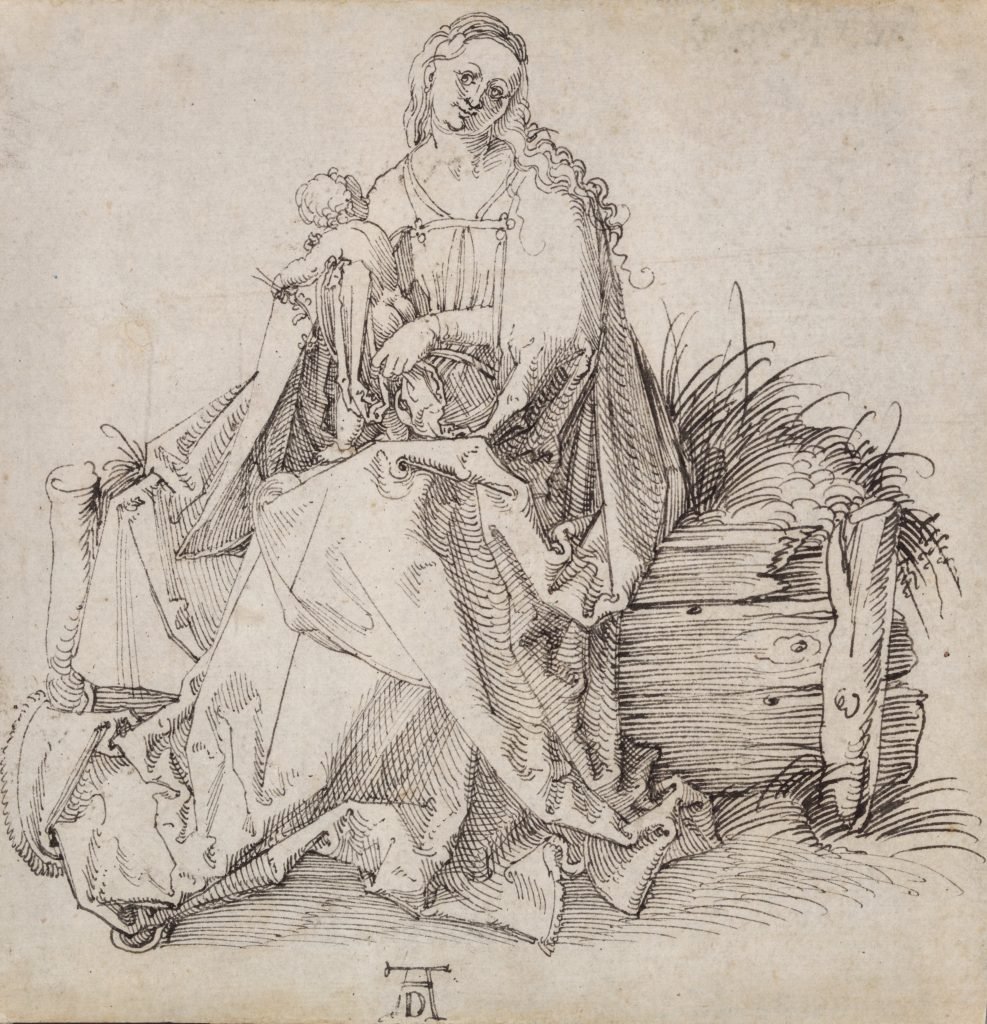The gallery has good reason to think it’s an original drawing by Dürer. After analysis, Christof Metzger, head curator at the Albertina Museum in Vienna and a leading authority on the artist, declared the work to be genuine. Metzger has even included it in his forthcoming catalogue raisonné on the Old Master. Giulia Bartrum, a former curator of German Prints and Drawings at The British Museum, also believes the drawing is authentic and has organized an exhibition around it on view at Agnews now.
Both experts suspect the work was created around 1503 as a preliminary study for Dürer’s well-known watercolor, The Virgin with a Multitude of Animals, which was finished roughly three years later. (The painting is now in the collection of the Albertina.)
For the consigner, who wishes to remain anonymous, getting to this point of recognition—and the payday that may come with it—has not been easy. After he acquired the artwork in 2017, he brought it to several experts for authentication or potential sale, only to be denied in each instance, according to Agnews.
It wasn’t until the owner was connected by chance to Clifford Schorer, a Boston-based collector, that the artwork was seriously considered. Schorer brought the drawing to Agnews—where he’s a shareholder—who in turn took it to Metzger and other experts. A paper restorer, for instance, confirmed the age of the material, and located Dürer’s signature Trident and Ring watermark.
More was learned about the provenance of the piece, too. An architect who lived outside of Boston had inherited the drawing as a family heirloom, and it was likely purchased in Paris by his grandfather in 1919. The architect died in 2012.
The gallery has not set a specific price for the piece, called The Virgin and Child with a Flower on a Grassy Bank, according to the Art Newspaper, but Schorer suspects it could go for as much as $50 million. (Read more.)
Meanwhile, in Yorkshire...Also from Artnet:
When Landmark Trust first began work to restore the room, which had been painted peach in the 1970s, the team noticed some colored stains on exposed timber, reports the Yorkshire Post. The likeliest explanation was dirt or mold, but Keay still knew it warranted further investigation.
“Then came the thunderbolts. First, the Lincoln team removed the plaster in a further five small areas and revealed what we had not dared to hope: wall paintings. Black and white and ochre and red, clear and unmistakable wall paintings. We were speechless,” she wrote in a blog post.
“Never in my own 27 years of working in historic buildings have I ever witnessed a discovery like this. Hidden panelling, yes, little snatches of decorative painting, once or twice,” Keay added. “But an entire painted chamber absolutely lost to memory, a time machine to the age of the Reformation and the Virgin Queen, never.”
Landmark Trust plans to conserve the paintings, and is looking to raise £94,000 (over $125,000) for the job. The project is part of larger efforts to reopen long shuttered parts of the home, which traces its origins to the 12th century, to the public. (Read more.)


















No comments:
Post a Comment